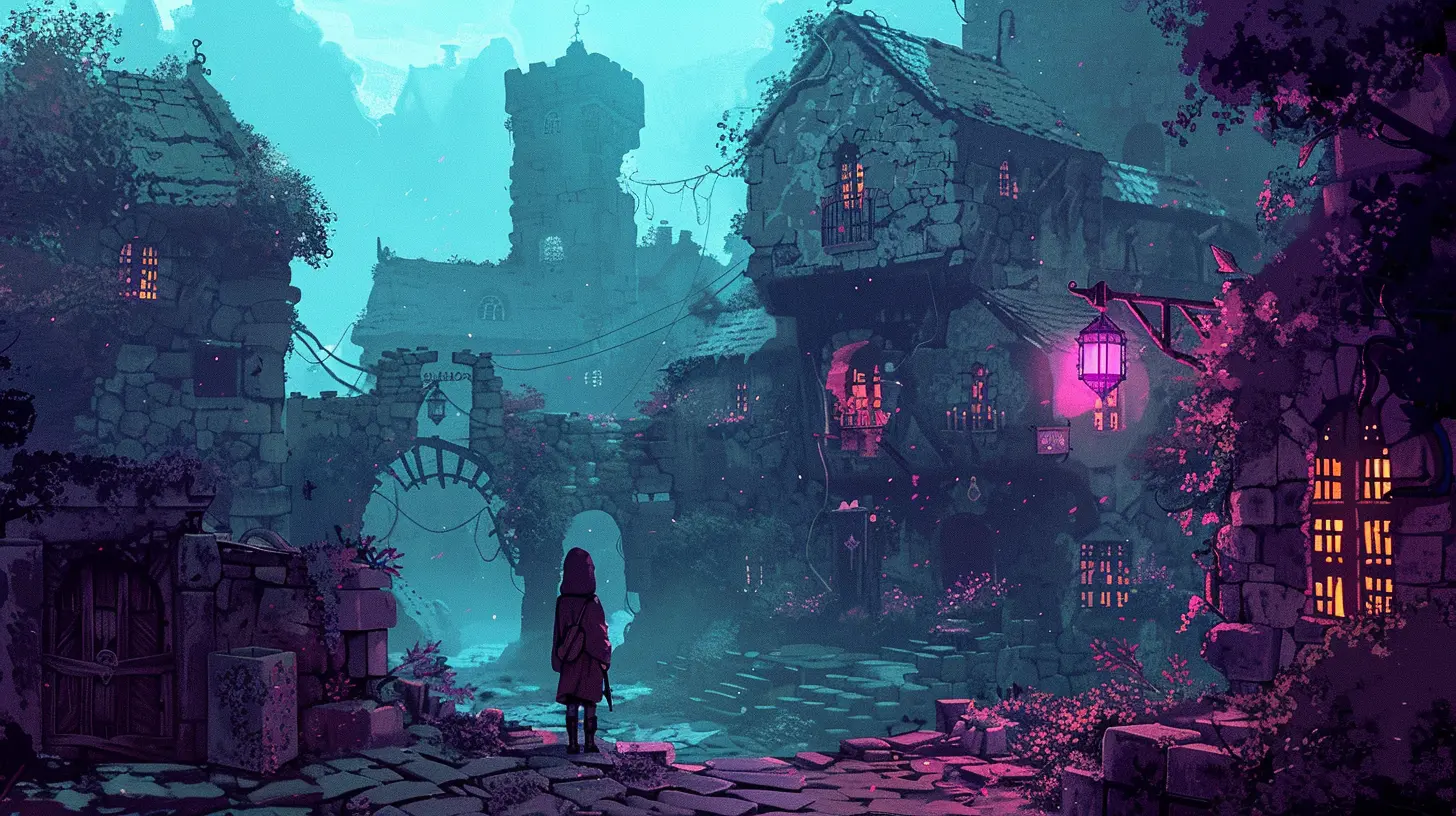Pitch Perfect: How to Write a Compelling Story for Your Crowdfunded Game
6 July 2025
Alright, let's talk about storytelling for games—especially when you're trying to convince strangers on the internet to back your crowdfunded masterpiece. Storytelling isn’t just about characters and conflict—especially not in the world of games. It's about creating an experience, a world, and a reason for players (and potential backers) to care.
If you're trying to stand out in the noisy, scroll-happy world of Kickstarter, Indiegogo, or any other crowdfunding platform, your game's story isn’t just part of the game—it's a key selling point. Ready to write a story that grabs attention, tugs heartstrings, and opens wallets? Let’s dive in.
Why Storytelling is a Crowdfunding Superpower
Let’s face it—your game might have slick mechanics, jaw-dropping visuals, and a soundtrack that slaps, but guess what sticks with people? The story. A compelling narrative gives backers context and an emotional hook. It's the “why” behind your project.People don’t just fund features—they fund feelings. They want to be part of something exciting, meaningful, or just flat-out cool. Your story is the bridge between your vision and their support.
Start with Your Game’s Core Theme
Before you even think about plot points, characters, or lore, ask yourself: What’s the heart of your game?Is it about survival against impossible odds? Redemption? Friendship amid chaos? Betrayal in a dystopian society?
This core theme is the compass that should guide everything—from your story arcs to your marketing language. You’re not just selling a game. You’re inviting people to feel something.
Pro tip: Jot down a one-sentence theme. If that sentence doesn’t spark curiosity or emotion, go deeper.
Define Your Game’s World—But Keep It Punchy
Worldbuilding is essential in game development, but who wants to read 50 paragraphs about your fictional planet’s agriculture system on a crowdfunding page? Yeah, no one.When you're pitching your story, you want to set the scene just enough.
Ask:
- What makes this world unique or interesting?
- How does the world reflect the theme?
- Are there immediate visual or emotional cues you can use?
Paint broad strokes and leave the fine details for in-game discovery. Remember, your crowdfunding pitch is a teaser trailer, not a documentary.
Craft Relatable Characters
We all love a good hero’s journey, but what makes it addictive? Characters we care about. Backers aren't just funding a game—they’re investing in people (real and fictional).Here’s how to make your characters stick:
- Give them flaws. Perfect characters are boring. Maybe your protagonist has a bad temper or a guilty secret.
- Give them goals. What do they want—and what’s standing in their way?
- Make them diverse. Think background, personality, beliefs, and abilities. Variety makes stories richer.
You don’t need a novel's worth of detail. A few strong lines can breathe life into a character.
Example:
> "Eira, a clever mechanic with a fear of fire, joins a rebel crew after losing her village to the government's scorched-earth policies."
Boom—now we care.
Clarify the Conflict (a.k.a., Why Should We Care?)
Conflict is the engine of story. Without it, your narrative is just a slideshow. What’s the problem that needs solving? What’s at stake?Think of conflict in layers:
- External Conflict: A war, an invasion, a deadly plague.
- Internal Conflict: The protagonist’s personal struggles—fear, doubt, guilt.
- Moral Conflict: Big themes—right vs wrong, sacrifice vs survival.
The more dimensions your conflict has, the more your story resonates. And the more it resonates, the more your campaign stands out.
Match Your Story to Your Gameplay
Here’s a big one that trips up a lot of devs—your gameplay and story have to hold hands. If your game is a fast-paced shooter but your story reads like a slow-burn romance, that’s a disconnect.Ask yourself:
- Do the mechanics reflect the story’s tone?
- Does the main character’s journey influence gameplay progression?
- Are there story-based rewards or decision-making?
Consistency is key. When narrative and gameplay are in harmony, you create immersion—something that makes players feel like they’re actually in your world.
Nail Your Story Pitch for the Campaign Page
Okay, now the rubber meets the road. You’ve got your characters, your world, your conflict—let’s shape it into a snappy, compelling pitch.Here’s a rough structure you can follow:
1. Hook (1–2 sentences): Grab attention fast.
2. Setting: Where and when does the story take place?
3. Main Character(s): Who are they and what do they want?
4. Conflict: What are they up against?
5. The Twist or Unique Angle: Why is this story different from others?
Example:
> In a sunless world where time has collapsed, rogue time-hackers battle to restore reality. You play as Nael, a memory-wiped ex-fugitive piecing together the lost timeline—before it disintegrates forever.
Short, punchy, and packed with intrigue.
Use Visual Storytelling
Crowdfunding thrives on visuals. Concept art, character designs, comic-style cutscenes—these bring your story to life and help backers feel it rather than just read about it.Consider adding:
- Character portraits with bios
- GIFs showing in-game story moments
- Storyboarding snippets
- Mood boards for world aesthetics
A picture is worth a thousand words. A dynamic, emotion-packed GIF? Maybe ten thousand.
Make Backers Part of the Story
Want to seriously jazz up your campaign? Make backers feel like they’re part of the narrative.Here’s how:
- Offer rewards where backers can name a non-player character (NPC)
- Let them vote on story branches or endings
- Include them in in-game lore ("Founder’s Wall", “Legends of the First Supporters”)
When people feel like they’re shaping the story, they become emotionally invested—and that’s the holy grail of crowdfunding.
Plan for Ongoing Narrative Engagement
Don’t just drop the story on launch day and call it a wrap. Keep the narrative momentum going throughout the campaign.You can:
- Release “lore drops” via updates
- Share short stories or character diaries in email newsletters
- Post behind-the-scenes writing sessions on social
This not only keeps your campaign engaging—it builds your community, one story beat at a time.
Avoid Common Storytelling Pitfalls
Even great ideas can fizzle with bad execution. Watch out for these traps:- Overcomplication: If backers need a wiki just to understand your game’s setting, simplify.
- Clichés: Chosen ones, evil empires, ancient prophecies… yawn. Add a fresh twist.
- Info-dumping: Don’t unload your entire lore bible on the first page.
- Detachment: If your characters don’t emote, neither will your backers.
Stay human. Stay grounded. Speak like you’re telling a story to a friend over coffee, not giving a TED Talk on galactic politics.
Test Your Story on Actual People
Don’t assume your story is compelling—test it. Share your pitch with friends, online communities, or indie dev groups. See what sticks. Watch where they get bored. Don't just ask “Do you like it?”—ask “What part would you back this for?”Feedback is your secret weapon. Use it to fine-tune not just your narrative, but your entire pitch language.
Final Thoughts: Make It Personal
At the end of the day, a killer story doesn’t come from following a formula—it comes from passion. What makes you excited about this game? What story are you dying to tell?Let that shine through. Authenticity always wins.
Remember, writing a compelling story for your crowdfunded game isn’t just about imagination. It’s about connection. Speak from the heart, and your story won't just pitch your game—it’ll pitch you. And that could make all the difference.
all images in this post were generated using AI tools
Category:
CrowdfundingAuthor:

Aurora Sharpe
Discussion
rate this article
2 comments
Tempest Cook
Ah, yes! Because who wouldn’t want to juggle a bunch of enthusiastic investors while crafting a masterpiece? Just sprinkle in some unicorns and magic beans, and you’re all set for crowdfunding success! Easy peasy!
November 4, 2025 at 4:00 AM
Serenity McCartney
Great insights! I'm eager to explore how storytelling can elevate crowdfunding success. Can't wait to apply these tips!
July 24, 2025 at 3:53 AM

Aurora Sharpe
Thank you! I'm excited for you to apply these tips and see how storytelling can enhance your crowdfunding journey!


